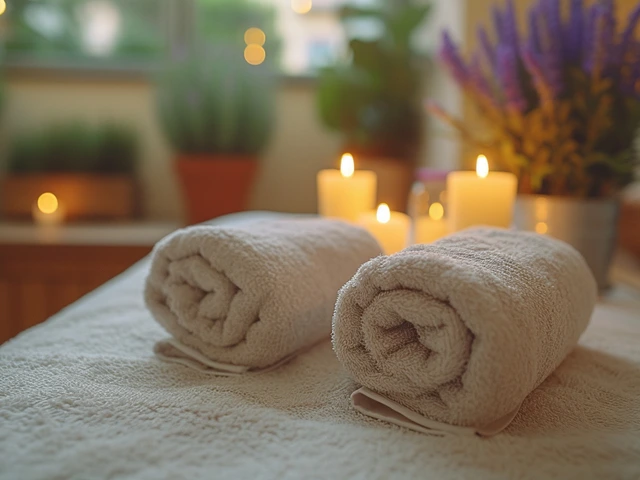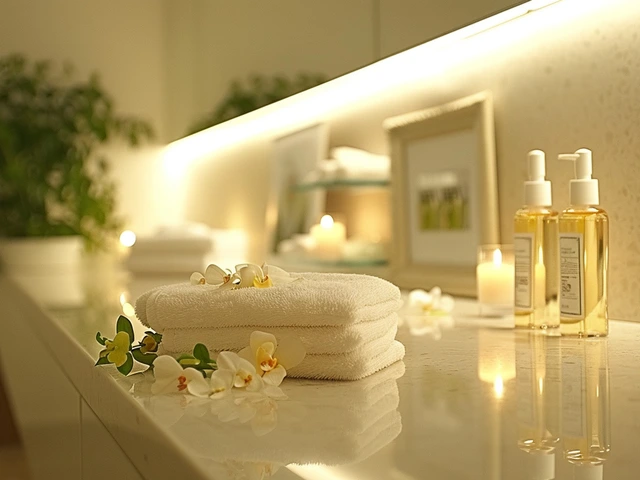Unveiling Acupressure: A Guide to Relief and Healing
Understanding Acupressure: Roots and Principles
Imagine a world where the touch of a finger can alleviate pain, dissolve stress, and even heal ailments. Sounds magical, right? Yet, this isn't a fairy tale; it's the essence of acupressure, a practice with roots winding back thousands of years to traditional Chinese medicine. Unlike its cousin, acupuncture, which uses needles, acupressure relies solely on the power of touch, applying pressure to specific points on the body. These points, known as acupoints, are believed to be potent energy centers connected to various bodily systems.
The principles of acupressure are deeply intertwined with the concept of Qi (pronounced 'chee'), a vital life force that flows through the body's invisible energy pathways, known as meridians. When Qi flows smoothly, it promotes health and wellbeing. However, blockages or imbalances in this flow can lead to physical and emotional discomfort. Acupressure seeks to harmonize these disruptions by stimulating acupoints, thereby enhancing the body's natural healing abilities.
The Science Behind Acupressure
While acupressure's origins steep in tradition, modern science has begun to shed light on how this ancient practice might exert its effects. Research indicates acupressure can influence the body in several ways, such as releasing muscular tension, improving blood circulation, and reducing stress. It's thought that the pressure applied to acupoints can stimulate the release of endorphins, the body's natural painkillers, thereby providing relief from discomfort and elevating mood.
Studies have also explored the potential of acupressure in managing chronic pain conditions, such as headaches, menstrual cramps, and lower back pain. For instance, a study published in the Journal of Pain Management noted significant improvements in pain levels among participants who practiced self-acupressure. This evidence suggests that, beyond its traditional uses, acupressure holds tangible benefits backed by scientific inquiry.
Identifying Key Acupoints for Wellness
With hundreds of acupoints scattered across the body, knowing where to start might seem daunting. However, a few well-chosen points can offer a gateway to harnessing acupressure's potential. He-7, located on the wrist, is renowned for its calming effects, making it a go-to for stress relief. Li-4, situated between the thumb and index finger, is another powerhouse, often utilized for pain management and to stimulate immunity. Meanwhile, Sp-6, found just above the ankle, is favored for its versatility, supporting digestion, promoting relaxation, and easing menstrual discomfort.
Learning to locate and stimulate these points doesn't require a medical degree or mystical insight. With a bit of practice and guidance, anyone can master the basic techniques of acupressure, turning their fingers into tools of healing and comfort. This democratization of wellness is what makes acupressure particularly appealing; it empowers individuals to take an active role in their health journey.
Practical Tips for Incorporating Acupressure Into Your Routine
Incorporating acupressure into your daily wellness routine need not be complicated. Start by setting aside a few minutes each day for self-care. Choose a quiet, comfortable space where you can relax, free from distractions. When applying pressure to acupoints, use a firm, gentle touch, holding each point for one to two minutes. Deep, slow breaths can enhance the effects, helping to release tension and facilitate a deeper sense of relaxation.
For those new to acupressure, there are plenty of resources available, from online tutorials to workshops led by practitioners. Start with simple techniques and a handful of points, gradually exploring more as you grow comfortable with the practice. Remember, the goal is to listen to your body and adjust the pressure and duration to what feels right for you.
The Benefits of Regular Acupressure Practice
The benefits of acupressure extend far beyond momentary relief; with regular practice, it can contribute to lasting improvements in health and wellbeing. Many find it an effective tool for managing stress, reducing anxiety, and promoting better sleep. It can also complement conventional medical treatments, offering a natural, non-invasive option for pain management.
Moreover, acupressure can deepen one's connection to their body, fostering a greater sense of awareness and mindfulness. This intimate understanding of one's physical and emotional state can be empowering, encouraging proactive rather than reactive approaches to health.
Conclusion: Acupressure as a Bridge Between Tradition and Modern Wellness
In our fast-paced, technology-driven world, it's easy to overlook the wisdom of ancient practices like acupressure. Yet, as we've seen, this age-old technique offers a bridge to better health, tapping into the body's natural healing capacities. Whether you're seeking relief from pain, stress, or simply looking to enhance your overall wellness, acupressure provides a simple, accessible means to achieve these goals.
As we explore the intersections of science and tradition, it becomes clear that the power of touch, guided by knowledge and intention, holds remarkable potential for healing. And so, with each pressure point stimulated, we not only connect with the roots of traditional medicine but also with our own innate capacity for self-healing and wellbeing.







Comments